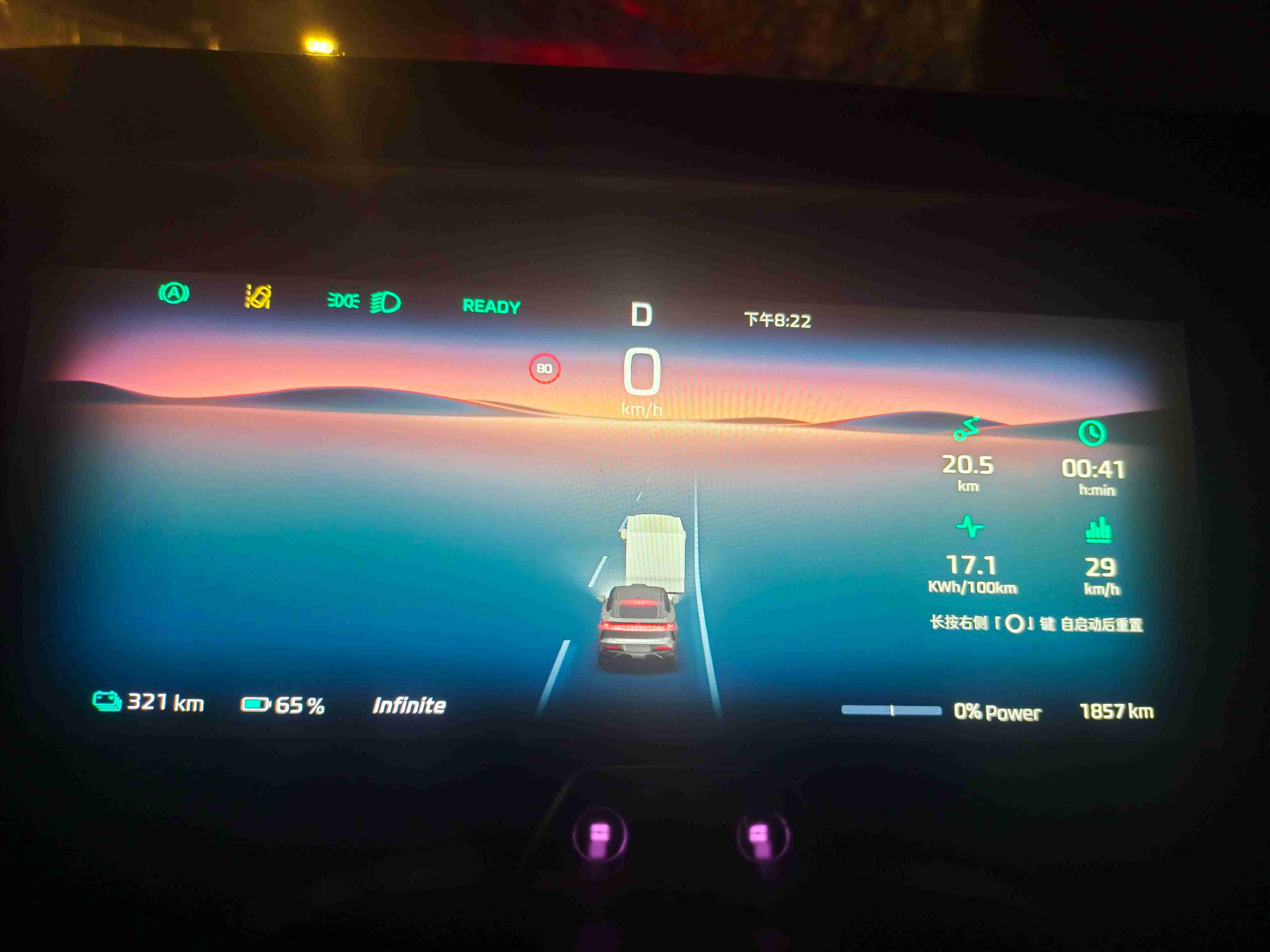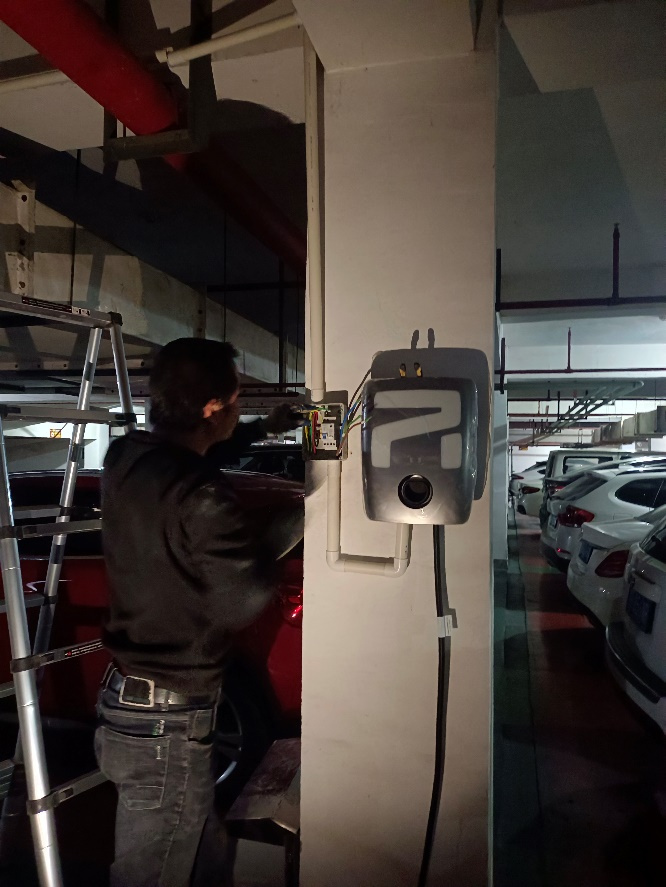My RisingAuto R7 has been driven nearly 1,800 kilometers since I picked it up. I’m very satisfied with the driving experience during this period–it’s been relaxing, comfortable, and full of surprises. Yesterday, I had a charging pile installed (installation was delayed due to being too busy). Here’s a simple overview of the installation process and my experience using it.

First, let’s talk about the basic installation details:
RisingAuto provided a 30-meter, 220V 6*6 square installation cable along with the charger, and a professional installation technician from RisingAuto installed it. You can choose between 7kW or 11kW, but the 11kW option requires an additional CNY 2,000 and a switch to three-phase power. I opted for the 7kW single-phase power, which means that the charging time can be freely controlled and the low power satisfies my charging needs.
Now, let’s talk about the installation process in detail.
Step One: Apply to the Property Management Office for Installation
A recent news report from Guangzhou told the story of a new energy vehicle owner who had been complaining on Weibo about not being able to get the charging pile installed even though they had had the car for two months. The property management office had refused on the grounds that it was impossible to install the pile due to the parking space and power available. As it turns out, this car manufacturer delivered over 40,000 cars, and over 20,000 charging piles were not delivered due to various reasons. Therefore, it is important to obtain the consent of the property management office prior to installation. This involves asking whether the parking space available for rent is suitable for installation. If the maximum power capacity in the community is insufficient, you need to contact the power supply department to expand capacity, increase transformers or rewire the network. If there are potential fire hazards, an agreement should be negotiated about how to reduce or eliminate these risks.
Thankfully, my community is relatively new, and there are already many charging piles installed in the parking spaces. The property management office was well-prepared, and the relevant forms were filled out completely. We filled out the “Charging Pile Installation Application” form, which required us to provide proof of parking space usage.

Step Two: Apply for an Electricity Meter from the State Grid App
We downloaded the “State Grid” app, selected “Charging Pile Report,” and uploaded the necessary materials.

You need to submit the following materials: proof of property management approval, vehicle purchase contract, ID card information, and proof of parking space usage. You can just take a picture of the document with your phone and upload it.## Installing Charging Pile
Grid will arrange a home installation of the charging pile shortly for free when the application is received.
Step 3: Installing Process
It is usually fast to install the charging pile after the electric meter has been set up and applied on the RisingAuto app. Despite being busy at work and receiving multiple phone calls from the installer, I managed to find the time last weekend to complete the process, which took a total of six hours. As my community has many cars and the wiring cannot be placed on the ground or rigged freely from above, the cable of the charging pile was laid inside the cable tray. The cable tray not only protects the cable but also facilitates centralised distribution. When a technician needs to repair a specific cable, it is convenient, quick, and safe to access.

Installation Cost: The cost of installing 1.4 meters of wire is ¥40 (5.97 US dollars), and RisingAuto will provide 30 meters of wire for free. As I needed 32 meters of wire, the total cost was ¥1,280 (194.31 USD). The price was reasonable as wiring in the community must follow specific environmental demands, causing the wires to be longer non-linearly.
The installation process ran smoothly. Here are some additional pictures.



My Electrical Usage Experience
Yesterday, I traveled long distances, approximately 400 kilometers in total, from Jiaxing, through Pinghu’s towns to Ningbo, Yuyao, Cixi, Pinghu, and back to Jiaxing. The battery was fully charged when I started the trip. During the journey, we drove through city roads and about 230 kilometers on the expressway, where the speed limit was 120 kilometers per hour. Unlike conventional cars, electric cars consume more energy when driving at high speeds because the battery needs to be charged continuously, resulting in higher energy consumption. We rested for over half an hour on the way, relaxing in air-conditioning, listening to music, and receiving a massage. Of course, these activities consumed some power.
After returning home to Jiaxing, the battery had 22% of its remaining capacity left, which showed that I could travel 110 kilometers more on it, consuming approximately 17.55 kWh per 100 kilometers. What do you think about my energy consumption during the trip?I usually use the infinite mode when using electricity in my car, which consumes more energy than the power-saving mode, but provides a comfortable driving experience and allows me to use all the functions without constraints. I drive about 70 to 80 kilometers per day and charge the battery once every five or six days for a distance of about 20 to 30 kilometers. It takes me about an hour to drive to work, and the energy consumption is about 10% if there are few red lights, and 15% if there are many red lights. After installing a charging pile at home, I charge the car when the electricity is cheaper at night. Compared to the fuel cost of gasoline cars, the electricity cost can be negligible, and the most important thing is that the battery life meets my needs, otherwise it would be a tragedy to run out of power on a long-distance trip.

▲ The range in the figure above is a dynamic range based on my driving habits.
This article is a translation by ChatGPT of a Chinese report from 42HOW. If you have any questions about it, please email bd@42how.com.
